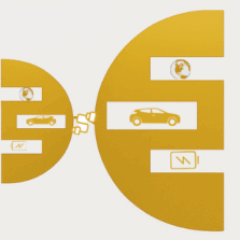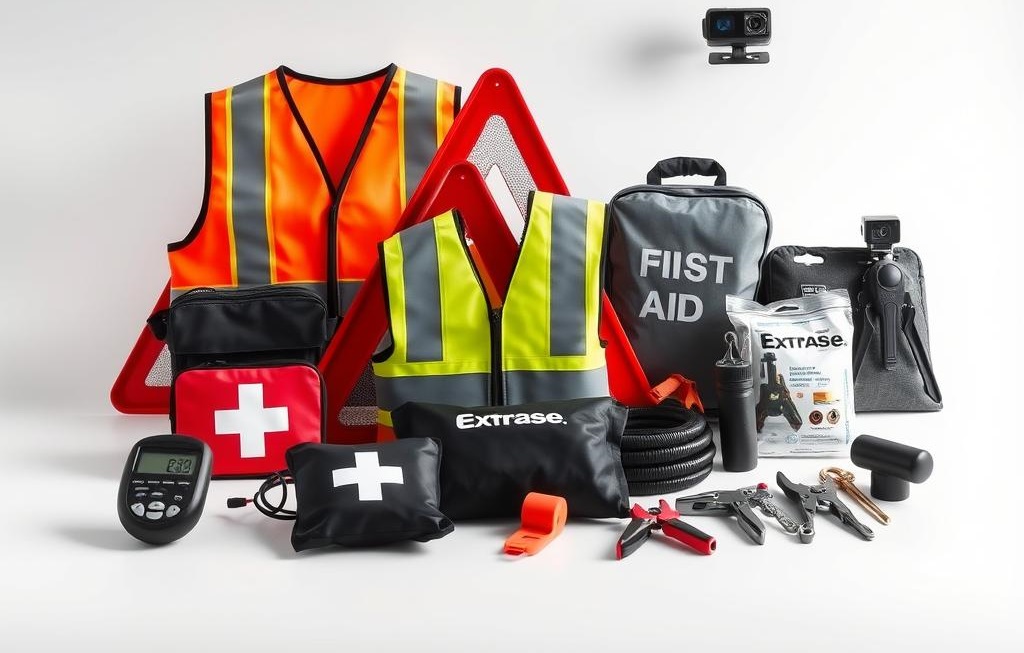Car travel offers freedom and flexibility, but it also comes with inherent risks that every driver should be aware of. From unexpected weather conditions to mechanical failures and road hazards, being prepared for potential dangers can make the difference between a smooth journey and a dangerous situation. Understanding common car travel warnings and knowing how to respond appropriately is essential for every driver, whether you’re planning a cross-country road trip or simply commuting to work.
Each year, thousands of travelers face emergencies on the road that could have been prevented with proper preparation and awareness. This comprehensive guide will walk you through the most important car travel warnings, provide practical safety tips, and help you develop an action plan for various scenarios you might encounter on the road.
Common Risks and Challenges During Car Travel

Car driving through hazardous weather conditions demonstrating car travel warnings
Before embarking on any journey, it’s crucial to understand the potential risks you might face. Car travel warnings exist for good reason—they highlight real dangers that drivers encounter regularly. Being aware of these risks is the first step toward mitigating them effectively.
Weather-Related Hazards
Weather conditions can change rapidly and create dangerous driving situations. Heavy rain reduces visibility and creates slippery roads, while snow and ice significantly decrease traction. Fog can severely limit your ability to see ahead, and high winds can make controlling your vehicle challenging, especially for high-profile vehicles like SUVs and vans.
Mechanical Failures
Vehicle breakdowns often occur at the most inconvenient times. Tire blowouts, engine overheating, brake failures, and electrical system malfunctions can leave you stranded or create dangerous driving conditions. Regular maintenance helps reduce these risks, but being prepared for unexpected mechanical issues is essential.
Road Safety Concerns
Poor road conditions, including potholes, uneven surfaces, and debris, can damage your vehicle or cause accidents. Construction zones present additional hazards with lane shifts, reduced speeds, and workers near the roadway. Wildlife crossings, particularly in rural areas, pose significant risks, with over 1.5 million animal-vehicle collisions occurring annually in the United States.
Driver-Related Risks
Driver fatigue, distraction, and impairment remain leading causes of accidents. According to the National Highway Traffic Safety Administration, drowsy driving causes approximately 100,000 crashes annually. Meanwhile, distracted driving—including texting, eating, or adjusting controls—contributes to thousands more incidents.
Stay Informed About Road Conditions
Access real-time updates on weather, road closures, and traffic conditions before and during your journey.Check Road Conditions
5 Critical Pre-Trip Checks for Safe Car Travel
Preventing problems before they occur is always preferable to dealing with emergencies on the road. These essential pre-trip checks can significantly reduce your risk of experiencing car travel warnings becoming realities during your journey.

Person performing pre-trip car inspection checking tire pressure as part of car travel warnings preparation
1. Tire Inspection and Pressure Check
- Examine all tires (including the spare) for signs of wear, damage, or embedded objects
- Check tire pressure when tires are cold, using the manufacturer’s recommended PSI (usually found on a sticker inside the driver’s door jamb)
- Ensure tread depth is adequate (insert a quarter into the tread groove with Washington’s head upside down—if you can see the top of his head, your tires need replacement)
- Verify that all lug nuts are tight and secure
2. Fluid Levels and Condition
- Check engine oil level and condition (dark, gritty oil indicates it’s time for a change)
- Verify coolant/antifreeze level in the reservoir (never open a hot radiator cap)
- Inspect brake fluid, power steering fluid, and transmission fluid levels
- Ensure windshield washer fluid is full, especially for long trips
3. Brake System Evaluation
- Listen for unusual noises when braking (squealing, grinding, or pulsating)
- Check for a spongy or soft brake pedal, which may indicate air in the lines
- Test braking response at low speed in a safe area
- Visually inspect brake pads and rotors if possible (or have a professional do so)
4. Lighting and Electrical Systems
- Test all exterior lights: headlights (low and high beam), brake lights, turn signals, hazard lights, and reverse lights
- Check that the horn works properly
- Verify that all dashboard warning lights illuminate briefly when starting the car and then turn off
- Ensure the battery terminals are clean and connections are tight
5. Emergency Kit Essentials
- First aid supplies: bandages, antiseptic wipes, pain relievers, prescription medications
- Basic tools: jumper cables, flashlight with extra batteries, multi-tool, duct tape
- Safety items: reflective warning triangles, high-visibility vest, fire extinguisher
- Survival supplies: bottled water, non-perishable food, blankets, phone charger/power bank
- Seasonal items: ice scraper/snow brush, sunscreen, extra coolant, or antifreeze depending on climate
Download Our Complete Pre-Trip Checklist
Never miss an important safety check before your next journey with our comprehensive pre-trip inspection guide.Get Your Free Checklist
7 Common On-Road Warnings and How to Respond
Even with thorough preparation, unexpected situations can arise during your journey. Recognizing these common car travel warnings and knowing how to respond appropriately can help you navigate challenging situations safely.

Car dashboard warning lights illuminated showing various car travel warnings indicators
1. Engine Overheating
Warning Signs:
- Temperature gauge in the red zone or warning light illuminated
- Steam coming from under the hood
- Unusual engine odors or performance issues
How to Respond:
- Turn off the air conditioning and turn on the heater (this draws heat away from the engine)
- Pull over safely as soon as possible and turn off the engine
- Wait at least 30 minutes before opening the hood to avoid burns
- Never remove the radiator cap when the engine is hot
- Call for assistance if the problem persists
2. Sudden Weather Changes
Warning Signs:
- Darkening skies, sudden temperature drops
- Heavy rain, hail, or snow beginning to fall
- Reduced visibility or strong wind gusts
How to Respond:
- Reduce speed gradually and increase following distance
- Turn on headlights (not just daytime running lights)
- Avoid sudden braking or steering movements
- If conditions become severe, find a safe place to pull over away from trees or other hazards
- Stay in your vehicle until conditions improve
3. Tire Blowout or Flat
Warning Signs:
- Loud bang or thumping noise
- Vehicle pulling strongly to one side
- Vibration or difficulty steering
- Tire pressure warning light
How to Respond:
- Grip the steering wheel firmly with both hands
- Don’t slam on the brakes—gradually reduce speed
- Activate hazard lights and move to a safe location off the road
- Ensure you’re completely off the roadway before exiting the vehicle
- Set up reflective triangles if you have them
4. Wildlife Crossings
Warning Signs:
- Wildlife crossing signs or animal detection systems
- Movement along the roadside, especially at dawn or dusk
- Reflective eyes visible in headlights
How to Respond:
- Reduce speed in areas with wildlife crossing signs
- Scan the road edges continuously, especially in rural areas
- If an animal appears, brake firmly but don’t swerve (swerving often causes more serious accidents)
- Use high beams when possible to increase visibility (except when facing oncoming traffic)
- Remember that animals often travel in groups—if you see one, more may follow
5. Brake System Issues
Warning Signs:
- Warning light on dashboard
- Soft or spongy brake pedal
- Grinding or squealing noises when braking
- Vehicle pulling to one side during braking
How to Respond:
- If brakes fail completely, pump the brake pedal rapidly
- Shift to a lower gear to help slow the vehicle
- Use the parking/emergency brake gradually, not abruptly
- Look for an escape route away from traffic
- Once stopped safely, do not continue driving—call for assistance
6. Poor Visibility Conditions
Warning Signs:
- Fog, heavy rain, or snow reducing visibility
- Difficulty seeing road markings or vehicles ahead
- Sunset glare or oncoming headlights causing temporary blindness
How to Respond:
- Reduce speed significantly
- Use appropriate lights (low beams in fog, not high beams)
- Increase following distance
- Use the right edge of the road or lane markings as a guide
- If visibility becomes too poor, pull off the road completely, turn on hazard lights, and wait for conditions to improve
7. Vehicle Stability Issues
Warning Signs:
- Traction control or stability control warning lights
- Vehicle skidding or sliding
- Difficulty maintaining lane position in wind or on curves
How to Respond:
- Ease off the accelerator—don’t brake suddenly
- Steer gently in the direction you want to go
- Avoid overcorrection, which can cause a spin
- If hydroplaning, maintain a steady steering position until traction returns
- Once control is regained, reduce speed and proceed with caution

